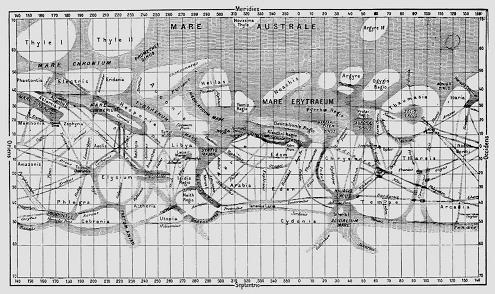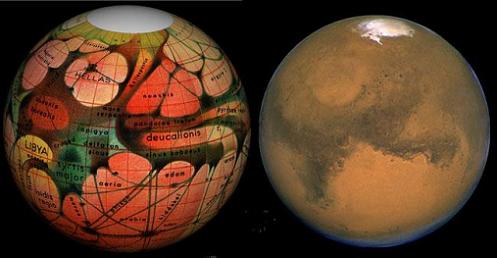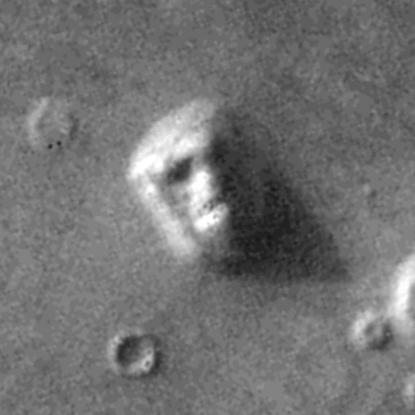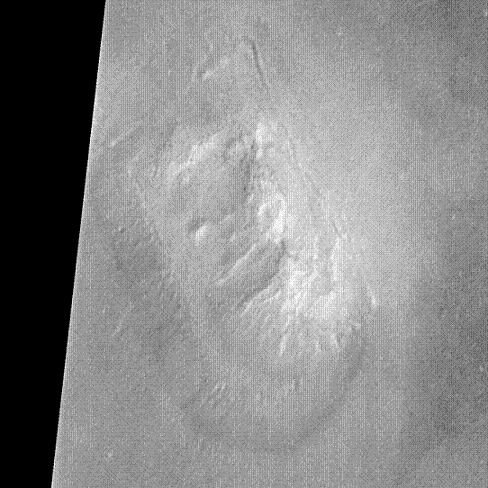Third article in the series, on the occasion of the launch of the Phoenix spacecraft, and the recurring hysteria of Mars seemingly looking like the moon
After Galileo included the telescope and improved it immeasurably, observed the craters of the moon and the "ears" of Saturn, Mars remained out of his reach and had to wait another 50 years - until 1659 for Christian Huygens who drew the first map of Mars. In 1698 Huygens wrote the book "Cosmotheoros" in which he first proposed the idea that life, and perhaps even intelligent life, might exist on Mars and the other planets. And his hypothesis in a place where there is intelligent life is that there are those who deal with astronomy and it is a hypothesis that the earth will be seen by Martians similar to the way we see Venus (that is - the earth will sometimes look like a banana). Beyond the speculations about life, there are quite a few other mistakes in his book such as the assessment that Jupiter and Saturn have solid ground. The most amazing thing is how in less than a hundred years the perception of the planets changed from points of light moving in the sky to places where astronomers might live.

When in the middle of the 18th century William Herschel observed Mars, he described how after one of the poles of Mars "thaws" the other pole "freezes", in fact today we know that the poles of Mars are made of dry ice - carbon dioxide and not water, but Herschel concluded that the Martians must have made canals Giants all along the planet to irrigate their cities This idea was revived in the mid-19th century when an Italian astronomer named Giovanni Schiaparelli reported on "flow channels" he saw on the surface of Mars, he observed and cataloged the channels observed on Mars. The large channels were given names such as Gihon and Pishon - like the rivers that come out of the Garden of Eden.
Channels and canals
One of the people who read Schiaparelli's reports was the American Percival Lowell, a capable and well-off astronomy enthusiast who devoted a considerable part of his time to the study of Martian "canals". Already in Lowell's time there were those who failed to observe these canals and it was indeed discovered that they are the product of an optical illusion in which the human mind "draws lines" between dark areas on the surface of Mars. To this day, Percival Lowell's name is commemorated in the observatory he founded and where the dwarf planet Pluto was discovered, some say that the name Pluto was chosen according to the first two letters in Percival Lowell's name Pel - RT.

In another hypothesis, although less known, I came across the book "Life in the Universe" by Michael Obenden, who served as the secretary of the Royal Astronomical Society of Great Britain and held other prestigious positions, the book was written in the early 60s of the 20th century and beyond the reference to the fact that "perhaps" there are canals On Mars, Obenden refers to the theory put forward in 1958 by the Russian astrophysicist Iosif Shklovsky regarding the orbit of Phobos, the inner moon of Mars. Based on his calculations, Shklovsky came to the conclusion that Phobos is made of a metal layer six cm thick and hollow inside. In February 1960, Fred Singer, the scientific advisor to US President Eisenhower, published a letter in which he hypothesized that the Martians use Phobos to collect the radiation around Mars, so that they could operate comfortably in its environment. Another opinion raised by NASA researcher Raymond H. Wilson Jr. regarding the nature of Phobos was that it contained a huge space base!
Today Phobos is still one of the most mysterious bodies in the solar system but it is not hollow, in fact the composition of Phobos is similar to that of C-type asteroids made of carbon, and its rock is highly porous. The strangeness of Phobos does not end here, because of its low orbit every hundred years Phobos lowers by about 1.8 meters, and in about 30-80 million years it is even expected to crash in front of Mars or maybe even turn into a ring system similar to that of Saturn.
A nice anecdote is that the names Phobos and Demus were suggested by the science coordinator at the famous Eton School named Henry Madan, and it was his niece Venetia Burney who suggested the name Pluto 52 years later. (Wikipedia source).
New questions open

When the Viking spacecraft reached Mars in the 70s of the 20th century, several "strange" bodies were observed in an area called "Sidonia Mesa", which was nicknamed the "Face of Mars" a hill about 2.5 km long, about two km wide and high of about 430 meters which presented an admirable sight to human faces.
Since 1996 spacecraft have been launched to Mars every two years almost like clockwork and a spacecraft called the mars global surveyor or MGS photographed the same area, now it can be seen that the "face of Mars" is nothing more than a hill with a strange morphology and that the great similarity observed by the Viking spacecraft was the result of games Light and shadow and low resolution.

During the Arctic winter of 1983, the annual research expedition to the Ice Steppe found a meteorite in the area called the Allen Hills, which, through gas analysis, was discovered to have originated from Mars. A deeper look through an electron microscope revealed that inside the meteorite there are fossilized "forms" reminiscent of bacteria - although these forms are 1,000 times smaller than the smallest bacteria known on Earth. In the press conference convened by NASA scientists, this was reported as conclusive evidence for life on the surface of Mars in the distant past (about 2-3 billion years ago). Today it is already known that those signs are not absolute proof and 10 years after the sensational announcement the debate as to the origin of the ban continues.
Previous articles in the series
